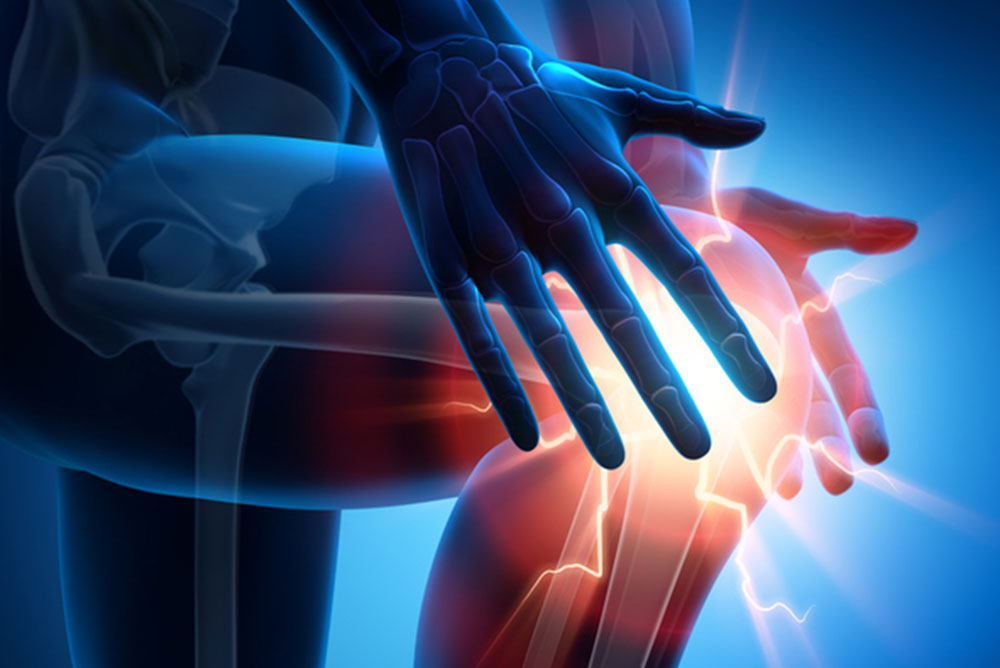
iStock
BREAKING A kneecap sounds like an excruciatingly painful injury, the result of a dramatic accident in which the knee slams against a hard surface like concrete —and it almost always is.
When Maryland graphic artist S. H. tripped over a table in a crowded room and landed on a hardwood floor, she knew she needed to go to the ER. There, she rated her pain level 9 out of 10. The treatment: a hip-to-ankle “immobilizer” on her leg around the clock for a month, no walking and no driving; and after that, wearing the immobilizer most of the time, with driving and some walking, until the break heals—typically eight to twelve weeks altogether.
But in my case, after falling lightly on a rocky trail, I felt fine walking another three miles, going to the grocery store and afterwards following the RICE (rest, elevation, compression and ice) formula for four days until I could get an orthopedic appointment. After the x-ray, my doctor said there was a fracture, but because I’d been walking on it, I could skip the immobilizer and move directly to a soft brace, with weekly x-rays to check on healing.
Based on this experience, patellar (kneecap) fractures can be more worrying than they feel or appear. The fact that they “can lead to profound impairment” is countered by the anodyne-sounding description of most as a “simple two-part diversion caused by a direct blow (i.e. dashboard injury)”—almost 80% are the result of traffic accidents. Most common between ages 20 to 50, these fractures are twice as likely to occur in men.
Patellar fractures comprise a “broad range of subtypes,” notably “non-displaced”—cracked or broken but still in the correct place (the kind S.H and I had) —or “displaced,” with parts of the bone out of place that require surgical repair using screws and ties. (In the worst cases, almost 7%, “open fractures” involve broken skin, require more complicated treatment and can result in “devastating soft tissue conditions.”)
The patella measures about two square inches in an ovaline shape, like a fig with the stem end facing downwards where the bone attaches to a ligament. The patella is the body’s largest sesamoid (derived from the Latin for “sesame seed,” because most are small) bone—by definition embedded in a tendon or muscle, in this case the quadriceps.
There it acts like a pulley by creating a smooth surface that increases the muscles’ ability to transmit force and extend the knee. It makes the muscles more efficient and absorbs stress between the upper and lower portions of the leg.
A clue to kneecap injury is difficulty bending the knee—as in walking downstairs. In addition, touch can often reveal a break, especially soon after the injury before the knee starts to swell. The “straight-leg test” —holding the leg straight and trying to raise it while lying flat —can help determine if the tendons or the patella are “disrupted.” The x-ray is definitive.
The degree of injury can depend on the amount of damage to surrounding muscles and tendons. Long-term knee problems following patellar fractures arise most often from disruption of the cartilage on the underside of the kneecap, with increased risk linked to preexisting arthritis in the knee.
Healing requires weeks of patience as well as intense mindfulness with every step. Especially when heading downstairs, I must remind myself —counterintuitively —to lead with the damaged leg. Besides working on extension, the patella also creates resistance to decelerate knee flexion. When walking downstairs or downhill, the patella must withstand force equal to four or five times your body weight during the moment when the other leg is suspended on its downward swing.
The most oft-repeated advice is “You need to be especially careful now, so don’t fall.” In my case, I had written, just the week before, about the relief of feeling generally braver after a session of falling practice.
In my post, I tried to be clear that whatever moves you’ve practiced, the moment of a fall is often too quick to put them to work. Although the narrow, rock-strewn path where I fell offered few options for safe falling, I remember having a one-second flash about doing something different to prevent injury.
Now I’m worried about falling in an entirely new context—of protecting the injured knee—along with being more superstitious than ever about what I write or say.
But my conclusion stands: “For the occasions when I still find myself trying to do more than one thing at a time, I know what I should really be practicing is not falling, but strength and balance—and maybe most important, mindfulness.”
—Mary Carpenter
Well-Being Editor Mary Carpenter is more determined than ever to practice mindfulness. Read more of her posts right here.

15 years ago I took up yoga, which I still do twice a week, to improve balance and avoid falls. But 5 years ago I fell — walking home from yoga class! Cuts and bruises on my knees but the worst on my are and left hand, which swelled up and made me fear having to have my wedding ring cut off. What caused the fall? Who knows! But clearly I was not being mindful of where and how I walked!